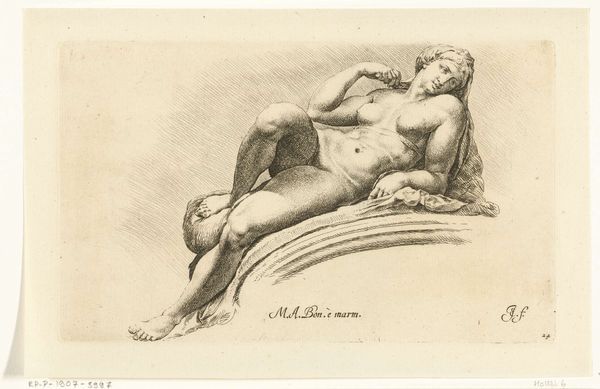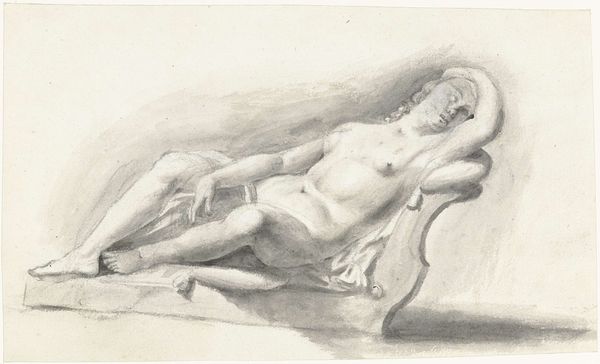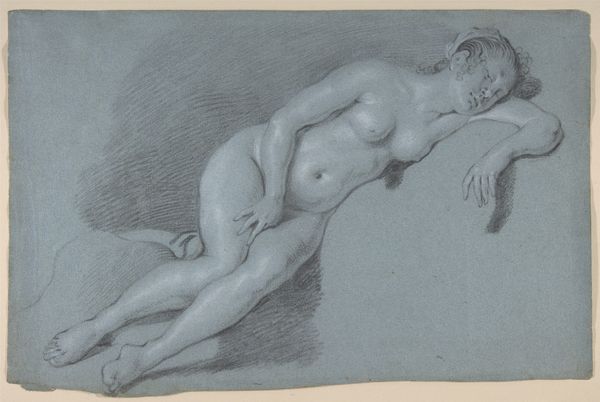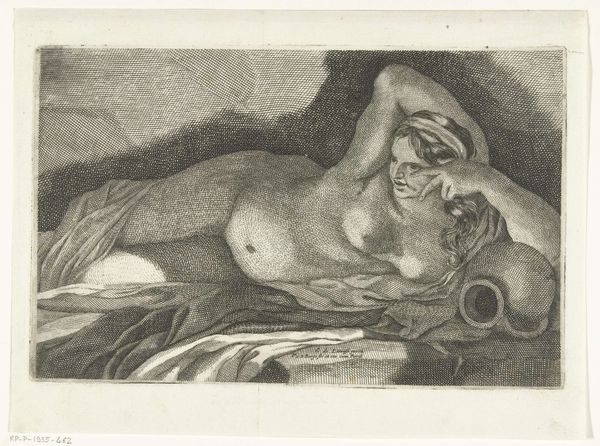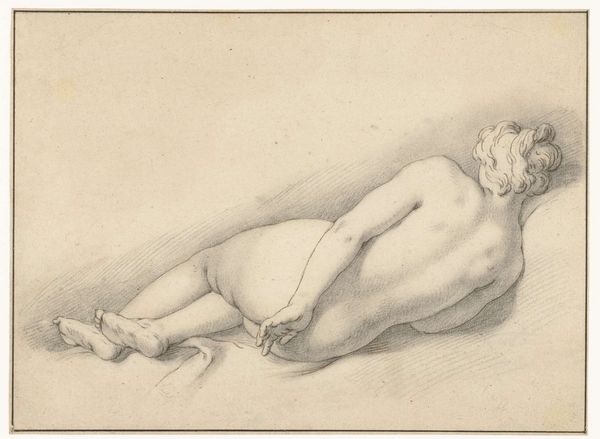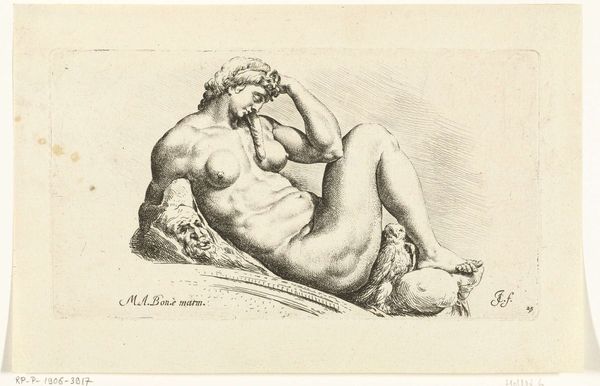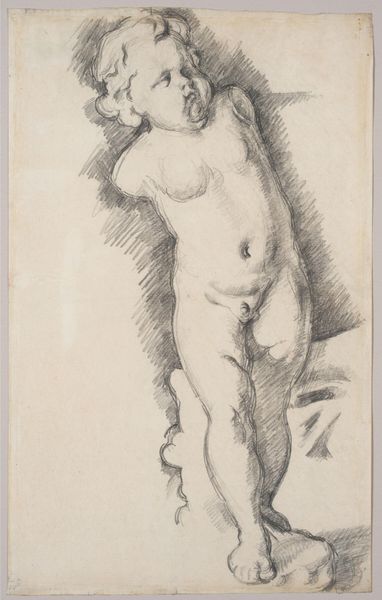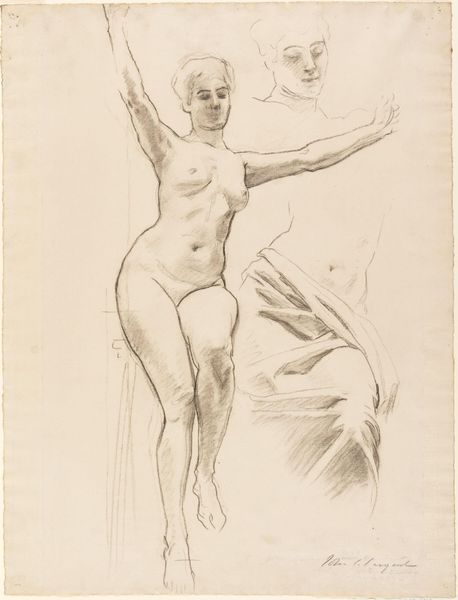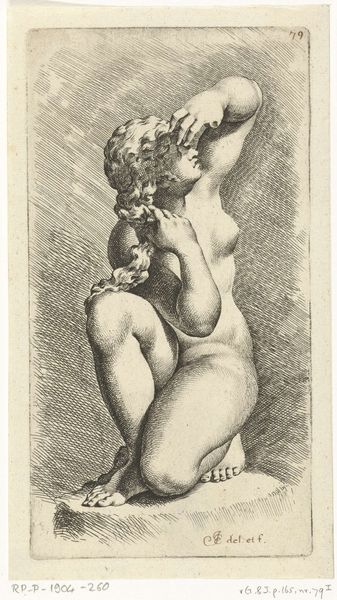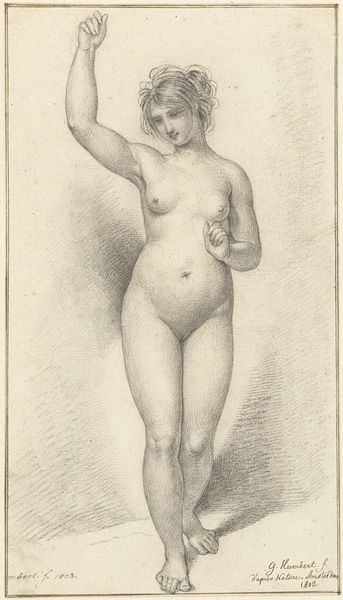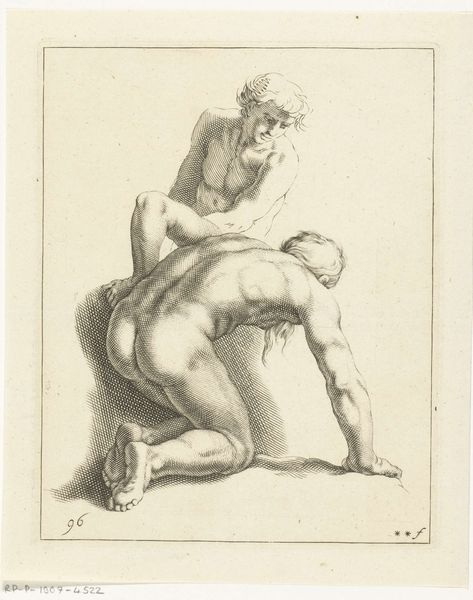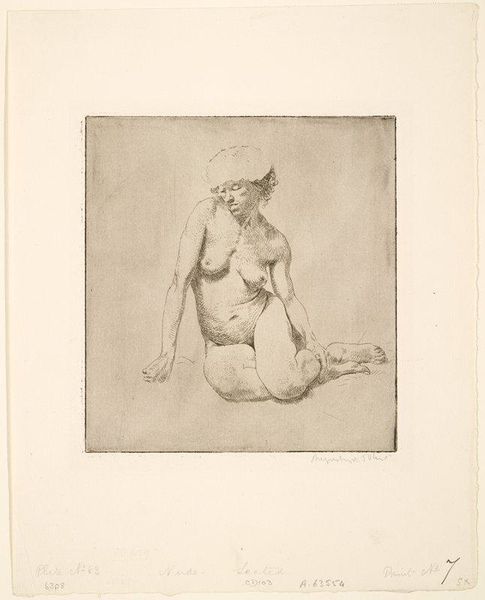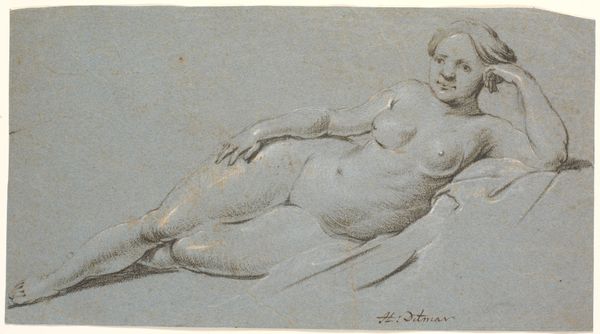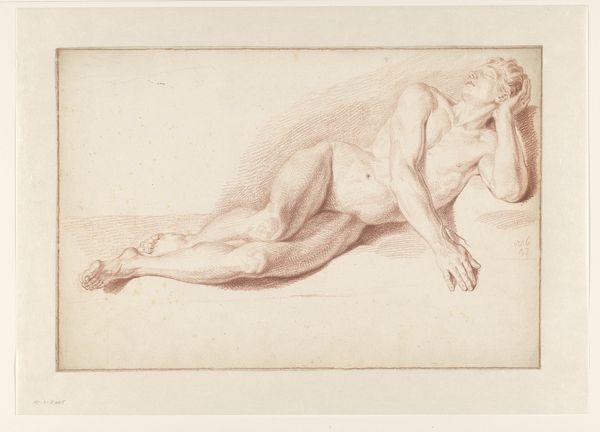
drawing, engraving
#
drawing
#
allegory
#
baroque
#
figuration
#
pencil drawing
#
nude
#
engraving
Dimensions: height 233 mm, width 150 mm
Copyright: Rijks Museum: Open Domain
Editor: Here we have Jan de Bisschop's "Aurora Lying on a Cloth," dating from between 1668 and 1671. It's a drawing and engraving currently residing in the Rijksmuseum. The figure seems so grounded, weighty. What strikes you most about this work? Curator: It's the layered symbolism that resonates. Aurora, goddess of dawn, is herself a potent symbol of rebirth and hope. The pose, so reminiscent of classical sculptures of reclining figures, anchors her in a history of idealized beauty. Do you see how the cloth, though simple, adds another layer? Editor: It does soften the intensity, giving it a domestic quality, perhaps. Is it meant to evoke something specific? Curator: It could represent the transition between night and day, the darkness receding. Think about what dawn means: the awakening of consciousness, a new beginning. De Bisschop chose to depict Aurora in this way at a turbulent time in Dutch history. Can you see any resilience reflected in the engraving's lines? Editor: Now that you mention it, I notice that her facial expression seems not peaceful or joyful but pensive, strong-willed even. Curator: Precisely. He’s imbuing her with fortitude, making her more than just a pretty allegory. He is, perhaps, encoding a cultural memory of resilience. A symbolic affirmation of hope during challenging times. Editor: I didn’t consider the engraving as speaking to contemporary concerns. So much symbolism packed into what initially seemed like just a classical nude. Curator: Images hold so much more than what immediately meets the eye, don't they? Discovering those layers is the real reward.
Comments
No comments
Be the first to comment and join the conversation on the ultimate creative platform.
